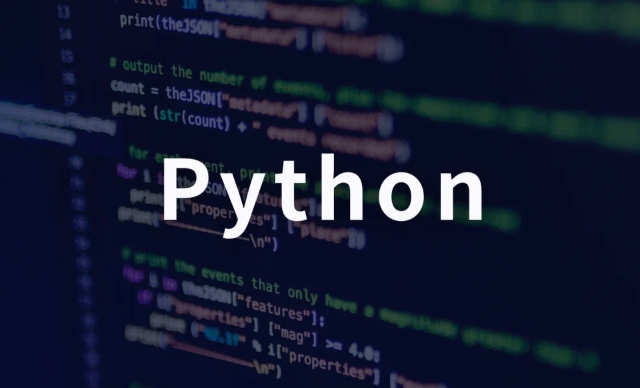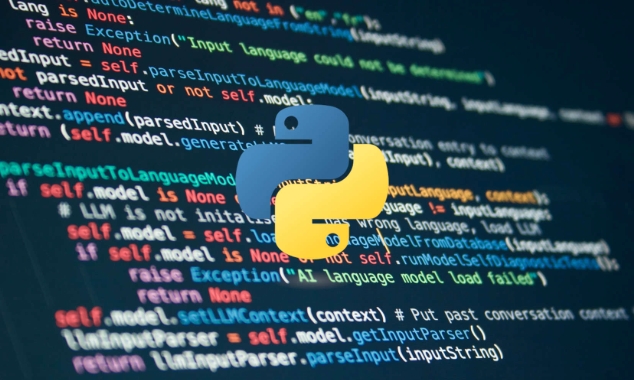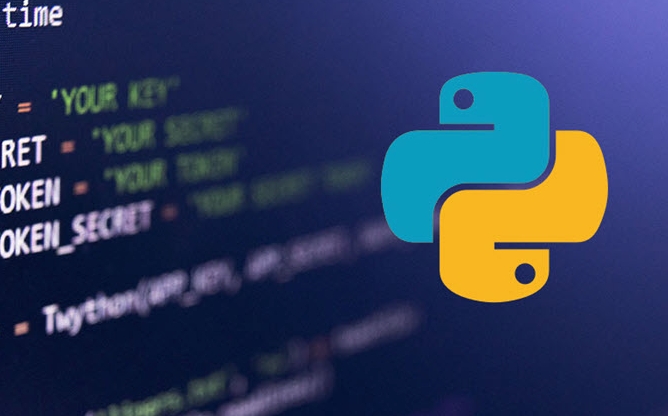파이썬에서 타입 원자를 처리하는 방법은 무엇입니까?
Understand that a TypeError occurs when operations are performed on incompatible types, such as adding a string and an integer, calling a non-callable object, or passing incorrect argument types to functions. 2. Use try-except blocks to catch TypeError and handle it gracefully, preventing program crashes and enabling fallback behaviors. 3. Validate data types before operations using isinstance() to prevent errors proactively or provide meaningful feedback. 4. Carefully handle user input and external data by anticipating unexpected types and using appropriate exception handling. 5. Debug with print statements or logging to inspect variable types and values when errors occur. Effective TypeError handling combines type validation and exception protection to improve code reliability and robustness.

A TypeError in Python occurs when an operation or function is applied to an object of an inappropriate type. For example, trying to add a string and an integer, or calling a non-callable object. Handling this error properly involves understanding its cause and applying appropriate checks or exception handling.

Here’s how to effectively handle a TypeError:
1. Understand Common Causes of TypeError
Common scenarios that raise TypeError include:

- Performing operations on incompatible types:
"hello" + 5 # TypeError: can only concatenate str (not "int") to str
- Calling a non-callable object:
x = 5 x() # TypeError: 'int' object is not callable
- Passing wrong argument types to a function:
len(42) # TypeError: object of type 'int' has no len()
Identifying the root cause is the first step in fixing or handling the error.
2. Use Try-Except Blocks to Catch TypeError
Wrap potentially problematic code in a try-except block to handle the exception gracefully:

try:
result = "hello" + 5
except TypeError as e:
print(f"Type error occurred: {e}")
result = "default value"This prevents your program from crashing and allows you to provide fallback behavior.
3. Validate Types Before Performing Operations
Instead of waiting for an error, check types in advance using isinstance():
def add_numbers(a, b):
if not isinstance(a, (int, float)) or not isinstance(b, (int, float)):
raise TypeError("Both arguments must be numbers")
return a + bOr handle it more gently:
def safe_add(a, b):
if isinstance(a, (int, float)) and isinstance(b, (int, float)):
return a + b
else:
print("Invalid types provided. Returning 0.")
return 04. Handle User Input and External Data Carefully
When dealing with input from users, files, or APIs, always assume data might not be the expected type:
user_input = input("Enter a number: ")
try:
number = float(user_input)
except ValueError:
print("That's not a valid number.")
except TypeError:
print("Input type is not supported.")Note: float() usually raises ValueError, but if user_input were None or another invalid type, a TypeError could occur in other contexts.
5. Debug with Print Statements or Logging
If you're unsure why a TypeError is occurring, add debug output:
print(f"Type of a: {type(a)}, value: {a}")
print(f"Type of b: {type(b)}, value: {b}")This helps identify unexpected types during development.
Basically, handle TypeError by combining prevention (type checking) with protection (exception handling). It's not always necessary to catch every TypeError, but in user-facing or robust applications, anticipating type issues makes your code more reliable.
위 내용은 파이썬에서 타입 원자를 처리하는 방법은 무엇입니까?의 상세 내용입니다. 자세한 내용은 PHP 중국어 웹사이트의 기타 관련 기사를 참조하세요!

핫 AI 도구

Undress AI Tool
무료로 이미지를 벗다

Undresser.AI Undress
사실적인 누드 사진을 만들기 위한 AI 기반 앱

AI Clothes Remover
사진에서 옷을 제거하는 온라인 AI 도구입니다.

Clothoff.io
AI 옷 제거제

Video Face Swap
완전히 무료인 AI 얼굴 교환 도구를 사용하여 모든 비디오의 얼굴을 쉽게 바꾸세요!

인기 기사

뜨거운 도구

메모장++7.3.1
사용하기 쉬운 무료 코드 편집기

SublimeText3 중국어 버전
중국어 버전, 사용하기 매우 쉽습니다.

스튜디오 13.0.1 보내기
강력한 PHP 통합 개발 환경

드림위버 CS6
시각적 웹 개발 도구

SublimeText3 Mac 버전
신 수준의 코드 편집 소프트웨어(SublimeText3)
 완성 된 파이썬 블록버스터 온라인 시청 입구 Python 무료 완성 된 웹 사이트 컬렉션
Jul 23, 2025 pm 12:36 PM
완성 된 파이썬 블록버스터 온라인 시청 입구 Python 무료 완성 된 웹 사이트 컬렉션
Jul 23, 2025 pm 12:36 PM
이 기사는 여러 상위 Python "완성 된"프로젝트 웹 사이트 및 고급 "블록버스터"학습 리소스 포털을 선택했습니다. 개발 영감, 마스터 레벨 소스 코드 관찰 및 학습 또는 실제 기능을 체계적으로 개선하든, 이러한 플랫폼은 놓치지 않아야하며 파이썬 마스터로 빠르게 성장할 수 있도록 도울 수 있습니다.
 파이썬 실행 쉘 명령 예제
Jul 26, 2025 am 07:50 AM
파이썬 실행 쉘 명령 예제
Jul 26, 2025 am 07:50 AM
Subprocess.run ()을 사용하여 쉘 명령을 안전하게 실행하고 출력을 캡처하십시오. 주입 위험을 피하기 위해 목록에 매개 변수를 전달하는 것이 좋습니다. 2. 쉘 특성이 필요한 경우, shell = true를 설정할 수 있지만 명령 주입을 조심하십시오. 3. 하위 프로세스를 사용하여 실시간 출력 처리를 실현하십시오. 4. SET Check = 명령이 실패 할 때 예외를 던지기 위해 true; 5. 간단한 시나리오에서 체인을 직접 호출하여 출력을 얻을 수 있습니다. OS.System () 또는 더 이상 사용되지 않은 모듈을 사용하지 않으려면 일상 생활에서 Subprocess.run ()에 우선 순위를 부여해야합니다. 위의 방법은 파이썬에서 쉘 명령을 실행하는 핵심 사용을 무시합니다.
 양자 기계 학습을위한 파이썬
Jul 21, 2025 am 02:48 AM
양자 기계 학습을위한 파이썬
Jul 21, 2025 am 02:48 AM
QUML (Quantum Machine Learning)을 시작하려면 선호되는 도구는 Python이며 Pennylane, Qiskit, Tensorflowquantum 또는 Pytorchquantum과 같은 라이브러리를 설치해야합니다. 그런 다음 Pennylane을 사용하여 양자 신경망을 구축하는 것과 같은 예제를 실행하여 프로세스에 익숙해 지십시오. 그런 다음 데이터 세트 준비, 데이터 인코딩, 구축 파라 메트릭 양자 회로 구축, 클래식 옵티마이 저 트레이닝 등의 단계에 따라 모델을 구현하십시오. 실제 전투에서는 처음부터 복잡한 모델을 추구하지 않고 하드웨어 제한에주의를 기울이고, 하이브리드 모델 구조를 채택하며, 최신 문서와 공식 문서를 지속적으로 언급하여 개발에 대한 후속 조치를 취해야합니다.
 파이썬의 웹 API에서 데이터에 액세스합니다
Jul 16, 2025 am 04:52 AM
파이썬의 웹 API에서 데이터에 액세스합니다
Jul 16, 2025 am 04:52 AM
Python을 사용하여 WebApi를 호출하여 데이터를 얻는 것의 핵심은 기본 프로세스와 공통 도구를 마스터하는 것입니다. 1. 요청을 사용하여 HTTP 요청을 시작하는 것이 가장 직접적인 방법입니다. Get 메소드를 사용하여 응답을 얻고 JSON ()을 사용하여 데이터를 구문 분석하십시오. 2. 인증이 필요한 API의 경우 헤더를 통해 토큰 또는 키를 추가 할 수 있습니다. 3. 응답 상태 코드를 확인해야합니다. 예외를 자동으로 처리하려면 response.raise_for_status ()를 사용하는 것이 좋습니다. 4. 페이징 인터페이스에 직면하여 다른 페이지를 차례로 요청하고 주파수 제한을 피하기 위해 지연을 추가 할 수 있습니다. 5. 반환 된 JSON 데이터를 처리 할 때 구조에 따라 정보를 추출해야하며 복잡한 데이터를 데이터로 변환 할 수 있습니다.
 Python Seaborn ontorplot 예
Jul 26, 2025 am 08:11 AM
Python Seaborn ontorplot 예
Jul 26, 2025 am 08:11 AM
Seaborn 's Loctplot을 사용하여 두 변수 간의 관계와 분포를 신속하게 시각화합니다. 2. 기본 산점도는 sns.jointPlot (data = tips, x = "total_bill", y = "tip", 종류 = "scatter")에 의해 구현됩니다. 중심은 산점도이며 히스토그램은 상단과 하단에 표시됩니다. 3. 회귀선과 밀도 정보를 친절한 = "reg"에 추가하고 marginal_kws를 결합하여 에지 플롯 스타일을 설정합니다. 4. 데이터 볼륨이 클 경우 "Hex"를 사용하는 것이 좋습니다.
 파이썬에서 문자열 목록에 합류하는 방법
Jul 18, 2025 am 02:15 AM
파이썬에서 문자열 목록에 합류하는 방법
Jul 18, 2025 am 02:15 AM
Python에서는 join () 메소드를 사용하여 문자열을 병합 할 때 다음 점에 기록되어야합니다. 2. 목록의 요소가 모두 문자열인지 확인하고 스트링이 아닌 유형을 포함하는 경우 먼저 변환해야합니다. 3. 중첩 목록을 처리 할 때 연결하기 전에 구조를 평평하게해야합니다.
 문자열 변환 예제에서 파이썬 목록
Jul 26, 2025 am 08:00 AM
문자열 변환 예제에서 파이썬 목록
Jul 26, 2025 am 08:00 AM
문자열 목록은 ".join (Words)과 같은 join () 메소드와 병합 될 수 있습니다. 2. 숫자 목록은 결합하기 전에 MAP (str, 숫자) 또는 [str (x) forxinnumbers]가있는 문자열로 변환해야합니다. 3. 모든 유형 목록은 디버깅에 적합한 괄호와 따옴표가있는 문자열로 직접 변환 할 수 있습니다. 4. '|'.join (f "[{item}]"furiteminitems) 출력과 같은 join ()과 결합 된 생성기 표현식으로 사용자 정의 형식을 구현할 수 있습니다.
 파이썬 웹 스크래핑 튜토리얼
Jul 21, 2025 am 02:39 AM
파이썬 웹 스크래핑 튜토리얼
Jul 21, 2025 am 02:39 AM
Python Web Crawlers를 마스터하려면 세 가지 핵심 단계를 파악해야합니다. 1. 요청을 사용하여 요청을 시작하고 GET 메소드를 통해 웹 페이지 컨텐츠를 얻고, 헤더 설정에주의를 기울이고, 예외를 처리하고, robots.txt를 준수합니다. 2. BeautifulSoup 또는 XPath를 사용하여 데이터 추출. 전자는 간단한 구문 분석에 적합하지만 후자는 더 유연하고 복잡한 구조에 적합합니다. 3. 셀레늄을 사용하여 동적 로딩 컨텐츠에 대한 브라우저 작업을 시뮬레이션하십시오. 속도는 느리지 만 복잡한 페이지에 대처할 수 있습니다. 또한 효율성을 향상시키기 위해 웹 사이트 API 인터페이스를 찾을 수도 있습니다.







